Da’wah or inviting people to Islam is an important duty of the Muslim community. This is especially so since no Messenger of Allah will appear after our beloved Prophet Muhammad (Peace Be Upon Him). In fact, the Qur’an makes numerous references to spreading the message of Islam through beautiful preaching. Our Prophet (PBUH) also cast upon his followers the duty of conveying Islam to others such as seen in his Final Sermon. Thus Muslims have a duty to convey the universal message of Islam to the rest of humanity.
The early Muslims went far and wide spreading the message of Islam so that within a hundred years Islam came to dominate a good part of the world from Spain in the West to China in the East. Today, however, it has not been as easy to promote Islam due to adverse media publicity and political pressures, so that we Muslims have to think of other means of conveying the message of peace and truth of Islam.
One such is “Awareness Through Mosque Tours” or ATMT, a unique concept of passive da’wah conceived by Syed Raziuddin Ali, a Director of the Bahrain-based Discover Islam organization in the late 1980s. The program which commenced at Al-Fateh Mosque in the Kingdom of Bahrain and was later introduced to other historic mosques in many parts of the Islamic world, including the Blue Mosque in Turkey has proven to be a success story.
There is a mistaken belief among many Muslims today that Non-Muslims cannot be allowed into mosques. In contrast, there are many instances in the lifetime of our Prophet Muhammad (Peace Be Upon Him) where those of other faiths were admitted into the Prophet’s Mosque, Masjid-ul-Nabawi in Medina. For instance, a delegation of Christians from Najran was housed in this mosque by the Prophet and were even allowed to practice their devotions in this sacred spot. Further there is evidence in the ahadith that a non-Muslim prisoner, Thumamah Ibn Uthal, was tied to one of the pillars of the mosque in the Prophet’s time. Seeing the conduct of the Muslims he was convinced of the truth of Islam and lost no time renouncing his earlier beliefs and becoming a Muslim.
Syed Ali observes that while in the olden days, the companions of the Prophet (PBUH) went far and wide spreading the message of Islam in keeping with the commandments of the Qur’an and the teachings of the Prophet, the Muslims of a later time neglected this duty and this very much remains the case even today. However, today we have a situation where tourists from all parts of the world are keen to visit mosques and admire its architecture besides curiosity about what’s going on in mosques due to media publicity, often adverse, which has been going on especially since September 11. As such, this should be viewed as the ideal opportunity to introduce Islam to these visitors in a subtle way, so that even if they don’t accept Islam, they go away with a favourable impression of Islam, contends Syed Ali.
ATMT is practiced in a big way in countries like Bahrain, Malaysia and Singapore, the last being a largely non-Muslim country with an influential Muslim minority. In Malaysia, it has taken off to a good start with the Malaysian Government giving it official recognition. In Singapore too five historic mosques have been selected for ATMT including Masjid Sultan located in Muscat Street, an old quarter of Singapore’s influential Malay minority, where this program is operative. It was selected for ATMT due to its historicity and potential to attract tourists. Its unique hybrid architecture is a blend of Indo-Saracenic features with domes and minarets seen in the exterior and typical church features with Gothic arches adorning its interior. Being a heritage mosque, it was declared as a national monument by the Singapore government in 1975.
In Turkey, it has been well received at the historic Blue Mosque, a large and beautiful Mosque in Istanbul which was built by the Ottoman Sultans several centuries ago. It is estimated that the number of tourists visiting this mosque averages 20,000-40,000 a day.
ATMT Start Up
The first step in implementing ATMT is to get the support of the trustees of the selected mosque by impressing on them the need for this form of dialogue and da’wah activity. This should not be a difficult task. It may be necessary in certain cultures to orient the congregation to be more friendly towards non-Muslim visitors and not stare or glare at them when they visit the mosque. This could be done by way of Friday sermons or other means of communication.
Once approval is received, it will be necessary to install a prominent notice board outside the mosque stating that the mosque is open to tourists, phrased for instance with carefully chosen words like We welcome those of other faiths to visit our Mosque. Furthermore, there should be some sort of clear display at the entrance about the etiquettes expected to be observed by the visitors, such as dress code, decorum at the mosque, etc. That the mosque is open to non-Muslim visitors should also be publicized in tourist guide books and by word of mouth to tour guides who could bring in interested tourists for a visit.
It would also be necessary to install a clothes rack containing abayas – or depending on the country or area, some other Islamically and culturally acceptable form of dress – for women who may be scantily clad. Such attire need not be black, but could be in a multitude of designs and colours so that the visitor would have the choice of wearing what is to her liking and even posing in it for a couple of photographs against the background of the mosque. In the case of men too, it would be preferable to install another rack containing white, ankle length Arab-style robes or some other form of local Muslim attire such as sarongs for male tourists who wear shorts. These racks should be conveniently placed near the entrance to the mosque so that tourists could be requested to wear them as soon as they enter the mosque premises. The purpose, needless to say, is to ensure visitors conform to Islamic codes of modesty in this place of worship.
Another important feature of such a program should be the provision of free introductory Islamic literature in the form of booklets. This feature is very important since such literature is something they take back with them and which they could readily read in their free time, bringing them another step closer to Islam- Insha Allah. These booklets could be given to them as they are about to leave the mosque. Such booklets should be on topics that help remove their misconceptions about the Islamic faith and culture. They could be kept inside the mosque, preferably in a rack especially built for the purpose.
Yet another feature, if possible, is to have a room or annex of the mosque allocated for the purpose of displaying well worded, brightly illustrated panels dealing with issues that would bring the hearts of visitors closer to Islam such as emphasizing on the Universal Mission of Islam, Equality in Islam, Role of Women in Islam and Muslim Contribution to Science and Civilization. Tourists could be escorted into this section by the guide shortly after the mosque tour and before the free literature is handed over to them.
Methods and Techniques
The choice of the mosque for ATMT lies in the fact that it lends itself well to introduce Islam to those of other faiths and serve as a forum to engage meaningfully with them. It is in fact a form of passive da’wah which should be acceptable to all. In this form of da’wah Islam is subtly introduced to the visitor without generating any impression of preaching.
Here lies the importance of the mosque in this program. The mosque is a place to which Muslims resort many times a day, for their 5 times a day prayers and their weekly congregational prayers. Thus it occupies an important place in Muslim religious life. It also contains features which reflect Islamic values and it is these features that could be dwelled and elaborated upon to give visitors a good idea of Islam. All this however depends on the skill and experience of the tour guide selected for the purpose. Linguistic skills, especially in English, a friendly disposition, a broad-minded attitude and a sound religious knowledge are all ingredients that go to make a good tour guide.
The most important aspect of the tour is how the tour guide receives the visitors, since this first point of contact is what makes a lasting impression. The reception part has to generate in them the feeling that they are welcome at this place and are treated in a very friendly manner like guests. What we have to constantly bear in mind is that tourists who visit mosques may not necessarily be interested in learning about Islam. To many of them it may merely be an exotic spot worth a visit and to take photographs. Thus a good tour guide when commencing his tour should be patient, not jump to inform them about Islam, but rather give the tourist ample time to admire the mosque and take photographs if they so desire.
The ideal tour guide know something about his tourists beforehand and besides a good knowledge of English, should have a fair idea of the greetings of other nationalities as his stock-in-trade. For instance saying Bon Jour to a Frenchman or Guten Tag to a German. Such gestures go a long way in getting the attention of the visitor and relating to him or her.
One must remember that tourists are mostly interested to learn about the mosque, especially about its architecture and activities. While its architecture may interest the more cultured sorts, its activities may interest the more curious sorts, especially those who have been fed negative images of Islam where mosques are seen as a breeding ground for terrorists and so on.
The tour guide could start with introducing the history of the mosque before getting on with its architecture. For example, when it was built, by whom and so on. Then comes the turn for its architecture or in other words, its features such as the dome and prayer niche and more importantly its absence of graven images. It is at this juncture that the tour guide should have the sagacity to introduce Islam to the visitor, albeit in a subtle way. This technique, perfected by Syed Ali, is known as the Sandwich Technique and has helped many a tour guide introduce Islamic faith and culture to tourists in a very subtle manner, prompting their interest to know more about it.
There is one feature almost every tourist will be impressed with, and that is the tranquil atmosphere of the mosque. Its wide open area without seating arrangements of any sort, absence of idols and pictures and beautiful mosaics, arabesque and geometrical patterns found in its interior such as windows and doorways cannot but fail to impress upon the visitor that the mosque is a safe and serene place devoted for sincere worship.
One may start with the total absence of idols or other graven images in the mosque since this feature pervades the entire mosque. This may not be immediately apparent to the tourist and it may be necessary for the tour guide to bring his or her attention to it. Through this he or she could introduce to the visitor the unique concept of Islamic monotheism and if they are Christian dwell on the commonalty between the Abrahamic faiths of Judaism, Christianity and Islam which are all monotheistic in nature. For example one could refer to the Ten Commandments which explicitly prohibit images of any kind. One could also point out that the Arabic word Allah which Muslims employ for God merely means ‘The God’ or in other words The One True God and that even Arab Christians use the word Allah to refer to God.
The Tour Guide may then bring their attention to the mihrab, the niche in the wall of the mosque towards which Muslims face in prayer. The mihrab as we know is oriented towards Mecca, and this could be used to impress on the tourist why Muslims face towards the direction of the Ka’aba in Mecca, as a form of unity binding the entire Muslim community and as importantly its hallowed place in Islam, being as it is the first temple dedicated to the One True God built by Prophet Abraham. Such facts should be particularly appealing to Christians. Besides this, one could dwell on the other aspects of the mosque, such as the dome, comparing it to the domes of Christian religious edifices and highlighting its importance in giving the exterior of the mosque its grandeur and more practically for internal acoustic purposes, that is to say, its ability to amplify sound.
One could even point to the worshippers, and while they are at it, inform the visitor that Muslims are expected to pray five times a day and that this is more of a prayer service rather than a simple prayer or supplication made to the Almighty. One could even give them a practical demonstration of the prayer with its cycles of standing, bowing and prostrating, stating for instance how every prayer commences with the Fatiha, which is the equivalent of the Christian Lord’s Prayer which it somewhat resembles. When ending the Fatiha the Muslim says Aameen while the Christian says Amen. Such similarities between Islam and other faiths should be stressed as far as possible. One could also dwell on the various postures of the prayer, focusing particularly on the aspect of sajdah or prostration as a gesture of utmost humility before the one True God which even Prophet Jesus engaged in when in the Garden of Gethsemane. One could even point out to them that the very term for mosque in Arabic, Masjid, derives from the Arabic term for prostration, sajdah, making the mosque basically a place of prostration. One might even go further and if they are responsive request them to prostrate on the ground and experience for themselves the pleasure one gets from this activity. One should however be careful to focus less on ritual and more on the underlying meaning of the prayer which is what the visitor would like to know.
One could then lead them to a stand where copies of the Qur’an are kept, taking a beautifully decorated copy and displaying it before them. While doing so one could explain that this holy scripture revealed by God to Prophet Muhammad through the angel Gabriel over 1400 years ago has remained exactly as it was revealed then and that it is the most widely read book in the world. One could even dwell on the Qur’an teachings on Prophets of old like Adam, Noah, Abraham, Moses and Jesus and even stress on the fact that there is an entire chapter in the Qur’an, Surah Maryam dedicated to Mother Mary, which should particularly appeal to Christians. Others could be told of the prophesies in the Qur’an that have since come true and the scientific descriptions given in the Qur’an which could not have been known to a mortal living 1400 years ago when it was revealed.
Throughout one must be careful not to use Arabic words which one’s audience might be unfamiliar with and instead use English or other equivalents in their place. For instance, one could use God instead of Allah and God Willing instead of Insha Allah. This is because usage of unfamiliar terminology would hinder the flow of thought and create some confusion. One must also ensure that the visitor is told what the word Islam means, stressing on its literal meaning of ‘Submission (to the One True God)’ in contrast to all other faiths that have been named after individuals, tribes or nations, such as for instance Christianity, which is named after Christ, Judaism after the tribe of Judah or Hinduism after the country of Hind or India.
Finally if illustrated panels highlighting Islamic teachings have been installed in an appendage or section of the mosque, one should lead visitors to it, to consolidate in their minds what they have already learnt and also provide them more information on Islam which may not have been covered in the tour such as human and women’s rights in Islam and Muslim contribution to science and civilization. Before seeing visitors off, the guide must ensure that his visitors are given booklets on Islam based on their needs. For instance booklets like Jesus in Islam and Muhammad in the Bible should ideally be given to Christian visitors.
Some mosques such as in Bahrain even go further, such as having an Open House area as part of the mosque where visitors could experience Islamic culture in all its beauty. For instance they could don a variety of costumes worn by Muslim peoples and take photographs of themselves in these. Others who are keen on tasting exotic foods could visit a stall dishing out traditional Arab fare like dates, sambusas and finely brewed Arabian coffee.
There could also be a special section for ladies keen on getting their hands painted with Henna designs and another section for people keen on getting their names inscribed in beautiful Arabic calligraphy. Yet another section could have a little girl named Maryam reciting the entire Qur’an by heart.
ATMT in Practice
In Hong Kong’s Kowloon Mosque, a large and beautiful mosque in downtown Kowloon, we had the pleasure of watching Syed Ali at work. The audience Ali was addressing was a group of Chinese students and as befitting the occasion, he focused on the philosophical side of Islam rather than stressing on the commonalities between, say, Islam and Christianity. This was in line with his maxim Know your audience.
Besides pointing to the mihrab towards which Muslims face in prayer as a symbol of unity and the saff, the line in which Muslims stand shoulder to shoulder in rows while in prayer as a symbol of equality, he had little to say of the other features of the mosque, except to point out the graceful simplicity of the mosque with its absence of distracting idols of any form.

What seemed more important to him was to win the hearts of these young people who had been brought up in a largely atheistic atmosphere. He therefore focused on the All Embracing Love and Mercy of an unseen God which is reflected in our worldly life. This Divine Arrangement is seen for instance at the birth of an infant when this helpless creature came into this world, its food is provided only upon its arrival as if by some miracle. As the growing child needs solid food, it starts getting its teeth and the mother’s milk disappears, again as if some unseen force had determined it.
In like manner, God has a plan for man’s spiritual sustenance, as seen in the many wise men He has sent over the ages to guide people on the straight path. That was a time when men were illiterate and the Divine message could not be preserved so that with time some parts of the message became corrupted. By the time of the Prophet Muhammad, society had become more literate and was able to transmit knowledge without much difficulty, hence the reason why the Qur’an was revealed as the final guidance to mankind to be preserved in its pure uncorrupted state to this day. What all this shows is that there is but One God and that whoever recognizes and accepts Him as such and surrenders to Him is a Muslim, stressed Ali.
In Singapore too we had the pleasure of watching Abdul Saleem Maliwanga, a Singaporean national of Kenyan origin at work. Here he was welcoming a female visitor from Europe to the Sultan Mosque, a historic mosque in Singapore’s Muscat Street built as far back as 1824 by Sultan Hussein Shah of Johore.
The lady was politely requested to don a robe when she stepped in to the mosque after signing the register. These robes, meant for non-Muslim visitors are all blue in colour and are hung in a row. They could be easily worn by simply putting it over one’s clothes within a matter of a few seconds much like a raincoat.
Abdul Saleem in his affable manner greeted the lady with a smile and took her inside, stopping short of entering the inner area where the worshippers were offering their prayers so as not to disturb their devotions. Placing himself below a board that read in English “Indeed, Prayer has been decreed upon the Believers, a decree of a specified time” from a verse in the Qur’an where she could see the devotees in the various postures of prayer, he brought her attention to the absence of graven images or pictures of animate figures in the mosque, pointing out that idolatry in any form was anathema to Islam. Worship is due to God and God alone, the Arabic name for God which Muslims use being Allah. He also mentioned how important it was for the Muslim to have around him an environment of tranquility to focus his devotions on the Almighty, before gently explaining to her the purpose of Islamic worship, focusing on the worship of the One True God and He alone.
He also dwelled on the architecture and appurtenances of the mosque including the mihrab and mimbar. The mihrab for instance was a niche in the wall of the mosque which pointed towards the direction of the Kaaba in Mecca, where all Muslims face in prayer. The mimbar was the stand upon which the preacher delivered his sermons.
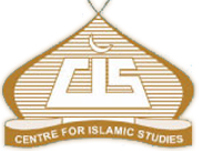 Center for Islamic Studies CIS
Center for Islamic Studies CIS

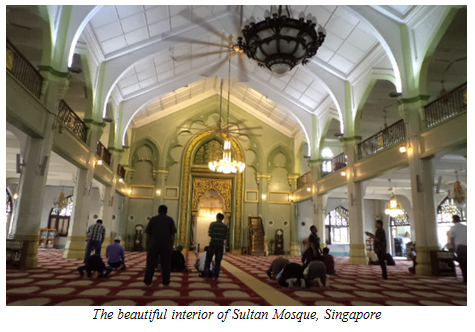

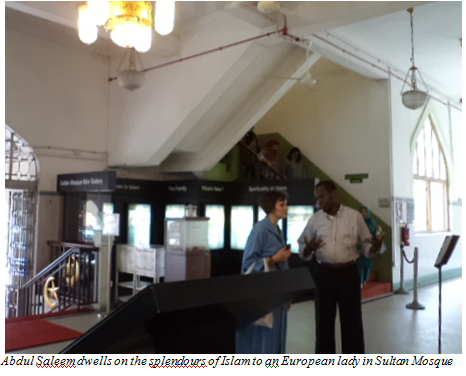
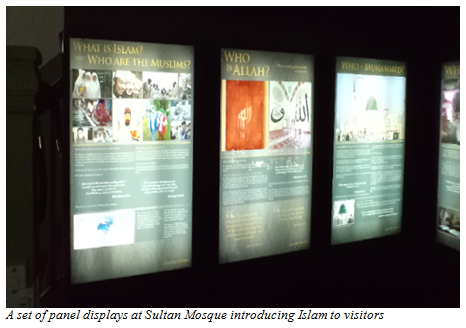
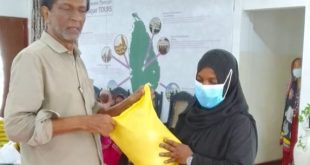
Alhamdhulillah in my concern this is a good and best tool to convey the message to non muslims.